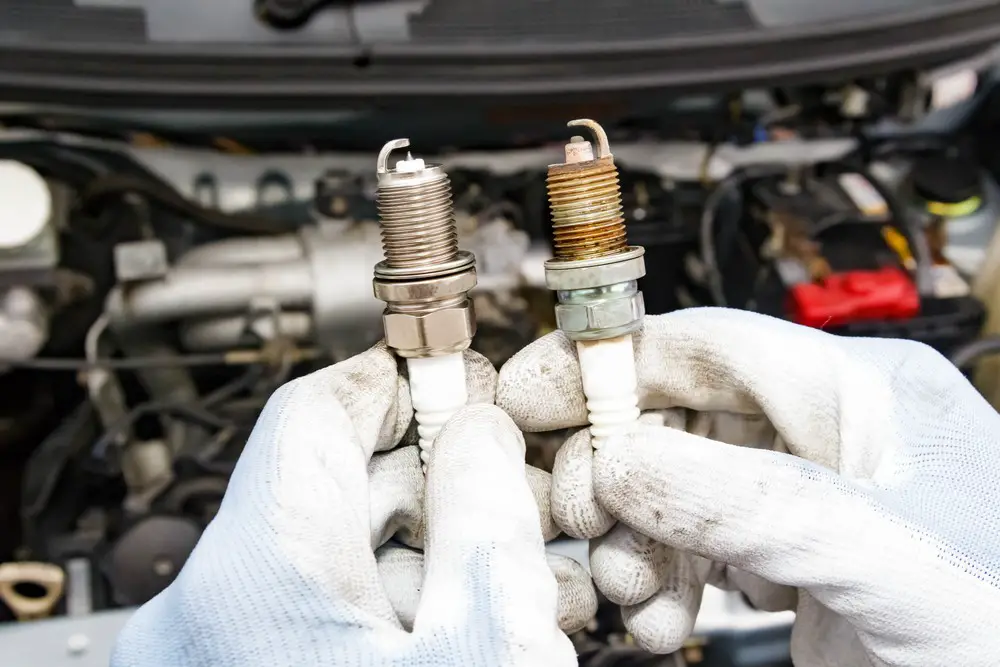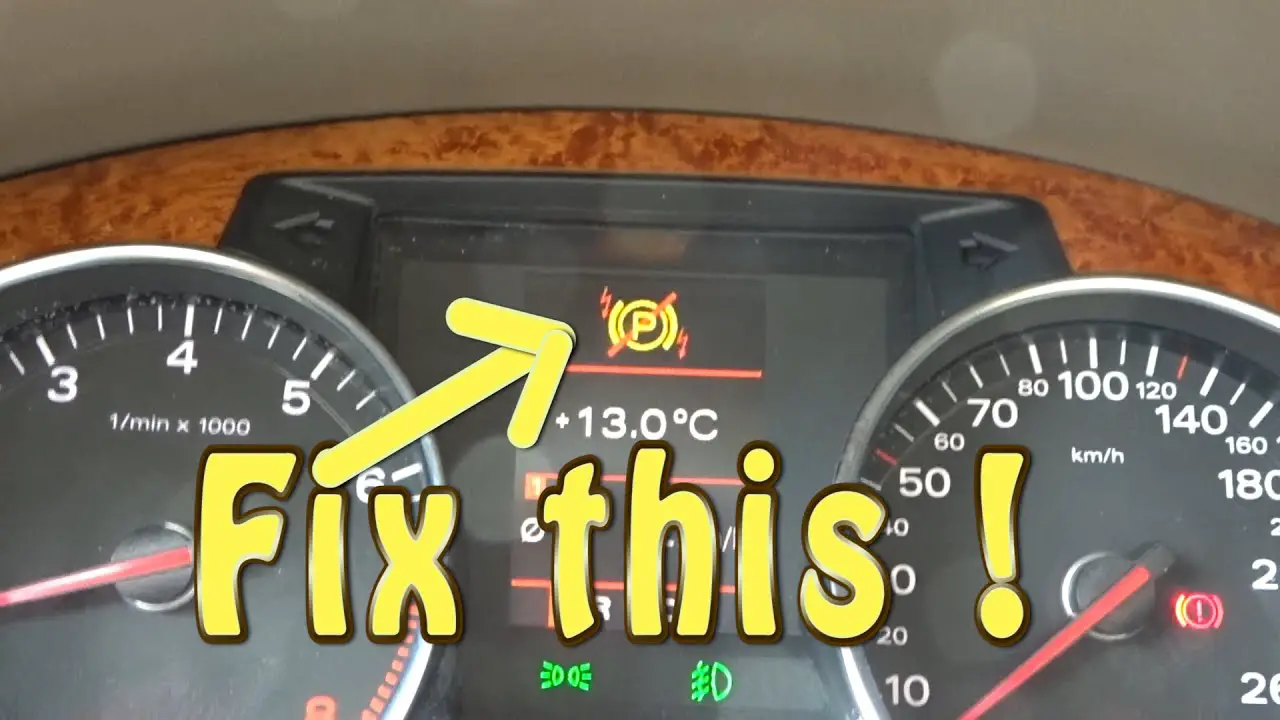For years, spark plugs have been a vital component of the internal combustion engine, responsible for igniting the air-fuel mixture that powers our vehicles. But what happens when these spark plugs become loose? In this comprehensive guide, we’ll explore the symptoms of a loose spark plug, why it occurs, the potential consequences, and how to fix the issue. So, fasten your seatbelts and get ready to delve into the world of spark plugs and the problems associated with them.
What Are Spark Plugs?
Spark Plug Anatomy
Picture a spark plug as a tiny but essential element in the heart of your car’s engine. It comprises a few key parts: the shell, insulator, electrodes, and the gap between them. The shell houses the insulator, a vital component that prevents voltage from escaping before it reaches the electrodes. These electrodes, one being the center and the other the ground, are crucial as the gap between them is where the magic happens.
How Spark Plugs Work
Now, let’s dive into the science behind this small yet mighty device. When you turn the ignition key, your car’s battery sends electricity to the ignition coil. This coil transforms that energy into a high-voltage charge. The spark plug, in turn, uses this power to create a spark in the gap between its electrodes. This spark is what ignites the air-fuel mixture in your engine’s cylinders, kicking off the combustion process that powers your car. It’s a bit like a mini bolt of lightning right in the heart of your engine!
Think of it as a tiny conductor orchestrating a symphony of controlled explosions. The spark plug’s role might seem minuscule, but without it, your car simply wouldn’t budge.
Understanding these components and how they work together will shed light on the intricacies of your engine’s performance and what can go wrong when a spark plug decides to misbehave.
The Importance of Spark Plugs
The Role of Spark Plugs in Your Engine
- Igniting Combustion: Spark plugs initiate the combustion process within your engine by creating a spark that ignites the air-fuel mixture in the cylinders, setting off controlled explosions that power your car.
- Performance Driver: They significantly impact your vehicle’s performance, influencing acceleration, power, and overall efficiency by ensuring a smooth and efficient combustion process.
- Efficiency Maximizers: Properly functioning spark plugs play a key role in improving fuel efficiency by ensuring the air-fuel mixture burns cleanly and completely, reducing fuel consumption.
- Emission Reducers: By contributing to efficient combustion, they help in reducing harmful emissions, making your vehicle more environmentally friendly.
- Vital Engine Component: Considered the heart of the engine, spark plugs are the vital link between electrical energy and mechanical motion, keeping your car’s performance and efficiency in balance.
Spark Plugs and Fuel Combustion
Understanding the intricate relationship between spark plugs and fuel combustion sheds light on how this process directly influences your vehicle’s power and fuel efficiency.
-
The Combustion Symphony
Think of your engine as a complex orchestra, and the spark plug as the conductor orchestrating a controlled explosion. When the spark plug delivers that timely spark, it ignites the air-fuel mixture within the cylinders. This ignition initiates combustion, and the resultant explosion pushes the piston down, converting the fuel’s chemical energy into mechanical force.
-
Power Generation
The efficiency of this combustion process is crucial for your car’s power generation. A properly functioning spark plug ensures a clean and efficient burn, resulting in more power. When combustion is incomplete or inefficient due to a faulty spark plug, it can lead to decreased power output. The result? Sluggish acceleration and reduced overall performance.
-
Fuel Efficiency
In the realm of fuel efficiency, spark plugs play a vital role. Efficient spark plugs ensure that the air-fuel mixture is combusted thoroughly, leaving little to no unburned fuel. When the combustion process is incomplete, your vehicle may require more fuel to compensate for the lost energy, leading to increased fuel consumption. Thus, the role of spark plugs in ensuring a clean and efficient burn directly influences the fuel efficiency of your car.
-
Balancing Power and Efficiency
A well-functioning spark plug strikes the perfect balance between generating power and optimizing fuel consumption. It ensures that your engine efficiently converts the chemical energy of fuel into mechanical energy, providing the power needed for your car to run smoothly.
Symptoms of a Loose Spark Plug

Overview of Loose Spark Plug Symptoms
Picture this: your car as a finely tuned orchestra, each part playing its crucial role in perfect harmony. However, when a spark plug goes rogue and decides to loosen up, the symphony turns sour. But fear not, there are telltale signs to alert you to this mishap.
When a spark plug wiggles its way out of place, it’s akin to a disruptor in the orchestra, creating discord in the engine’s performance. Signs of a loose spark plug are not as obvious as a neon sign flashing “Loose Plug Detected,” but they do give off certain vibes.
One of the primary red flags of a loose spark plug is a drop in your car’s performance. Your once zippy ride might start feeling lackluster, with a noticeable loss in power or acceleration. Engine misfires or irregularities in ignition could become the norm, causing the engine to shudder or hesitate.
Additionally, you might observe a decline in fuel efficiency – a dreaded sight for any economy-conscious driver. Ignition troubles or even a rough idle might hint at a loose spark plug causing mischief under the hood.
Detailed Examination of Symptoms
A loose spark plug might seem like a minor inconvenience, but its impact on your vehicle’s performance can be quite significant. Let’s take a closer look at the various symptoms that might manifest when a spark plug decides to go rogue.
-
Low Acceleration
Imagine your car as an athlete gearing up for a sprint, but instead of bursting forward with energy, it hesitates and stumbles at the starting line. Low acceleration is one of the first signs of a loose spark plug. When a spark plug isn’t firmly seated in its designated cylinder, it struggles to ignite the air-fuel mixture effectively. As a result, the engine’s power output decreases, making it feel sluggish and unresponsive when you hit the gas pedal. You’ll notice that your car takes longer to reach your desired speed, especially when overtaking or merging onto the highway. It’s as if your car has lost its zest, and the culprit might just be a loose spark plug.
-
Loss of Power
If you’ve ever driven a car that suddenly felt like it was towing a heavy trailer behind it, you’re likely familiar with the sensation of power loss. This symptom often goes hand in hand with low acceleration and is a direct consequence of inefficient combustion caused by a loose spark plug. When the spark plug doesn’t create a strong spark, the air-fuel mixture in the cylinder doesn’t burn as completely as it should.
This incomplete combustion results in reduced power generation, and your car simply can’t perform at its full potential. It’s like trying to sprint with a backpack full of rocks – you’re dragging unnecessary weight, and your engine is struggling to keep up with the demand for power.
-
Poor Fuel Efficiency
In a world where we’re all conscious of both our budgets and the environment, poor fuel efficiency is a nightmare. When a spark plug is loose, it can’t perform its ignition duties as efficiently as it should. This leads to incomplete combustion and unburned fuel. In an effort to compensate for this loss, your car’s engine will inject more fuel into the cylinders.
Unfortunately, this means you’ll be visiting the gas station more frequently, and your wallet will feel the pinch. Poor fuel efficiency is not just an economic concern; it also contributes to increased emissions, which isn’t great for the environment. So, if you notice that your fuel gauge is dropping faster than usual, it’s time to consider the condition of your spark plugs.
-
Engine Misfires
Engine misfires are like hiccups in your car’s internal rhythm. When a spark plug is loose, it can’t consistently generate the necessary spark. As a result, the combustion process in one or more cylinders becomes erratic. These misfires are often felt as sudden jolts or stutters in your car’s movement. You might experience a momentary loss of power, followed by a jerky recovery, almost as if your car momentarily lost its sense of direction.
Engine misfires are not only annoying but can also be a precursor to more serious issues if left unaddressed. They are especially noticeable when you’re accelerating or maintaining a steady speed, and they can make your ride feel far from smooth.
-
Ignition Difficulties
Ignition is the heartbeat of your engine. It’s the process that kickstarts the combustion and sets your car in motion. When a spark plug is loose, it can lead to ignition troubles. You might experience difficulties starting your car, especially on cold mornings. It can be frustrating to turn the key and have your engine hesitate or struggle to come to life.
Sometimes, it might even refuse to start at all, leaving you in a frustrating situation. Ignition issues caused by loose spark plugs can extend beyond just starting the engine; you might also encounter intermittent stalls and prolonged cranking. It’s as if your engine is trying to wake up from a deep slumber, and it’s not a pleasant way to begin your day.
Also Read: ABS Traction Control and Hill Assist Light On: Your Vehicle’s Warning Signals—What Do They Reveal?
Why Do Spark Plugs Become Loose?

Causes of Loose Spark Plugs
When your spark plugs decide to loosen up and cause all those troublesome symptoms we discussed earlier, it’s not because they’re simply in a rebellious mood. There are common reasons behind this issue, and understanding these causes can help prevent future troubles.
One primary cause of loose spark plugs is insufficient torque during installation. When a spark plug isn’t tightened to the manufacturer’s recommended torque level, it can gradually work its way out of the cylinder head. This happens because the combustion process exerts a lot of force on the spark plug, and without the right torque, it can’t maintain its position securely.
Another contributing factor is dirt. The area around the spark plug can accumulate grime and debris, creating an uneven surface between the plug and the cylinder head. This unevenness can lead to poor alignment, causing the spark plug to pop out of the engine. So, regular maintenance that includes keeping the area around the spark plugs clean can go a long way in preventing this issue.
Now, let’s delve deeper into these causes.
The Role of Torque and Dirt
The torque applied to your spark plug during installation is crucial. It’s like tightening a bolt – too loose, and it won’t hold, too tight, and you risk damaging the threads. If the spark plug isn’t tightened to the manufacturer’s recommended torque specification, it won’t be able to withstand the immense pressure generated during combustion. As a result, it slowly backs out of the cylinder head, leading to the symptoms of a loose spark plug we discussed earlier.
On the flip side, if the threads in the cylinder head are dirty or corroded, it can also lead to a loose spark plug. Dirt and debris in the threads create an uneven surface. When the spark plug is installed in such conditions, it doesn’t sit properly and securely in place. As your engine operates and the cylinder head heats up, the metal expands, exacerbating the issue and potentially causing the spark plug to come loose.
To avoid these problems, it’s essential to follow the manufacturer’s recommended torque specifications when installing spark plugs and to regularly clean the area around the spark plugs to prevent the buildup of dirt and debris. These simple maintenance steps can go a long way in keeping your spark plugs securely in place, ensuring your engine operates smoothly.
Consequences of Loose Spark Plugs
Impact on Engine Performance
- Low Acceleration and Reduced Power
A loose spark plug affects your vehicle’s ability to accelerate smoothly and efficiently, resulting in decreased power. This feels like your car is struggling and can’t perform at its best.
- Misfires and Erratic Performance
Engine misfires caused by a loose spark plug lead to rough idle, jolting sensations while driving, and an overall lack of smoothness in your car’s operation. This can affect your confidence in your vehicle’s reliability.
- Poor Fuel Efficiency
Incomplete combustion due to a loose spark plug results in poor fuel efficiency, meaning you’ll find yourself at the pump more often as your vehicle consumes more fuel than necessary. Increased emissions further impact the environment.
Thread Damage
- Gradual Thread Wear
A loose spark plug can gradually wear down the threads within the cylinder head, creating instability and complications during the replacement process. This may require additional repairs and could potentially lead to cylinder head replacement.
- Stripping of Threads
Continued loosening and tightening of the plug can strip the threads, making it difficult to securely install a new spark plug. This can escalate repair needs, increasing maintenance complexity and costs.
How to Fix a Loose Spark Plug
Step-by-Step Guide to Fixing Loose Spark Plugs
A loose spark plug can be a nuisance for your vehicle’s performance, but fear not! You can remedy this issue with a few simple steps. We’ll guide you through the process, ensuring your spark plugs are snug and your engine runs smoothly.
-
Identifying the Loose Plug
Start by identifying the loose spark plug. Symptoms such as low acceleration, engine misfires, or an unusual sound from the engine bay could indicate a loose plug. If you suspect this issue, it’s essential to confirm which plug is causing the problem.
-
Removing the Spark Plug
Before removal, it’s crucial to let the engine cool down. Carefully detach the ignition coil using a spark plug socket wrench. Gently remove the spark plug, being cautious not to damage the threads in the cylinder head. Check the condition of the plug for any unusual signs, like fouling or damage.
-
Applying Dielectric Grease
To prevent electrical noise and interference, apply a small amount of dielectric grease to the rubber boot or porcelain insulator at the base of the new spark plug. This will aid in future removal and prevent potential seizing.
-
Reinstalling and Torquing the Spark Plug
Carefully place the new spark plug into the socket and gently hand-thread it into the cylinder head to avoid cross-threading. Once it’s snugly in place, use a torque wrench to tighten the spark plug to the manufacturer’s recommended torque specification. This is crucial – overtightening can damage the threads, while insufficient torque might lead to the plug loosening again.
-
Finishing the Job
After ensuring the spark plug is correctly torqued, reinstall the ignition coil using the spark plug socket wrench. Be sure to replace any items you removed during the process. Double-check that everything is properly secured and tightened.
Fixing a loose spark plug is a manageable task, but it requires precision and care to prevent further complications. By following these steps, you’ll not only ensure the plug is secure but also maintain the integrity of your engine.
It’s important to note that if you’re unsure about the process, seeking professional assistance from a certified mechanic is a wise decision. They possess the expertise and tools necessary to fix the issue correctly, ensuring your engine operates optimally.
Regular maintenance and inspection of spark plugs are essential to prevent issues with loose plugs. When you notice symptoms that might indicate a loose spark plug, promptly addressing the problem can prevent further damage to your engine and keep your vehicle running smoothly.
Benefits of Maintaining Spark Plugs
Proper maintenance of your vehicle’s spark plugs is not just about keeping them functional; it’s about preserving the overall health and performance of your engine. Here are the significant benefits of consistently maintaining your spark plugs:
-
Enhanced Engine Performance
Maintaining spark plugs optimizes the engine’s performance. A well-maintained set of spark plugs ensures that the combustion process runs smoothly, providing better power delivery, smoother acceleration, and improved overall engine performance.
-
Fuel Efficiency
Regular maintenance of spark plugs contributes to optimal fuel efficiency. When spark plugs are clean and functioning correctly, they facilitate efficient combustion, reducing the need for excessive fuel, thus improving mileage and saving you money at the pump.
-
Emission Control
Efficiently operating spark plugs play a vital role in controlling emissions. When the air-fuel mixture ignites properly, there’s less unburnt fuel that could turn into harmful emissions. As a result, properly maintained spark plugs aid in minimizing your vehicle’s environmental impact.
-
Consistent Engine Start
Well-maintained spark plugs ensure a consistent and reliable engine start. They provide the spark necessary to ignite the air-fuel mixture when starting your vehicle. Keeping them in top condition reduces the chances of a rough start, engine hesitation, or even a failure to start.
-
Longevity of Engine Components
By maintaining spark plugs, you’re indirectly contributing to the longevity of other critical engine components. When spark plugs are in good condition, the engine operates efficiently, reducing stress on other parts like the pistons, valves, and even the catalytic converter. This ultimately extends the life of these vital components.
-
Prevention of Major Engine Issues
Regular maintenance of spark plugs helps prevent more severe engine issues. Faulty spark plugs can lead to misfires, pre-ignition, and even engine damage. By keeping the spark plugs in good shape, you can avoid these potentially costly and troublesome complications.
-
Cost Savings
Maintaining spark plugs might seem like a minor task, but the cumulative effect of improved performance, fuel efficiency, and avoiding major engine problems results in significant cost savings. You’ll spend less on fuel, fewer repairs, and experience longer intervals between maintenance needs.
How to Replace Spark Plugs
Replacing your vehicle’s spark plugs is an essential aspect of routine maintenance that ensures optimal engine performance. Here’s a comprehensive guide to assist you in the step-by-step process:
-
Removing Wires/Coils
Begin by carefully removing the wires or coil packs that cover the spark plugs. If your vehicle has plug wires, handle one cylinder at a time to prevent mixing them up. Gently detach the wire or coil pack from the spark plug by pulling it straight out, ensuring you don’t yank or damage the wire during removal.
-
Removing the Old Spark Plug
Use a spark plug socket and ratchet to carefully loosen and remove the old spark plugs from the cylinder head. Turning counterclockwise, unscrew the plugs gently, ensuring you maintain a straight angle to prevent any damage to the threads within the cylinder head. Be cautious not to drop any debris into the open cylinder.
-
Checking the Gap
Before installing new spark plugs, it’s essential to check the gap. The distance between the center and ground electrodes should match the manufacturer’s specifications. Use a gap tool to adjust the gap as necessary. Refer to your vehicle’s manual for the correct gap size, as this can vary based on the plug type and vehicle model.
-
Installing New Spark Plugs
Hand-screw the new spark plugs into the cylinder head to ensure they’re correctly aligned before using a spark plug socket. Carefully tighten the plugs, ensuring they’re snug but not overly tightened to avoid damaging the threads. If you’re uncertain about the correct torque, use a torque wrench as recommended by the manufacturer.
-
Reconnecting Wires/Coils
Once the new spark plugs are installed, it’s time to reattach the wires or coil packs. Gently push the wire or coil pack onto the spark plug until you feel or hear a distinct click, signifying it’s properly seated. Ensure all connections are secure before moving on to the next plug.
Repeating these steps for each spark plug ensures a thorough and effective replacement process.
Related Post: The Top 10 Best Spark Plug Gap Tools In Review: Buying Guide
FAQs About Symptoms of a Loose Spark Plug
What Are the Best Spark Plugs for Cars?
The best spark plugs for cars can vary depending on the vehicle make and model. Popular options often include platinum and iridium spark plugs due to their durability and superior conductivity. It’s essential to consult your vehicle’s manual or a professional mechanic to determine the most suitable spark plugs for your specific car.
What Happens if a Spark Plug is Not Tight?
An improperly tightened spark plug can lead to several issues, including engine misfires, reduced power, poor fuel efficiency, and potential damage to the threads in the cylinder head. Additionally, a loose spark plug might cause engine knocking and unusual noises from the engine.
How Can I Tell If I Have a Loose Spark Plug?
Common signs of a loose spark plug include low acceleration, engine misfires, rough idling, and a lack of power during acceleration. Additionally, you might hear unusual knocking sounds emanating from the engine bay.
How Do I Know If My Spark Plugs Need Changing?
Several symptoms might indicate the need for spark plug replacement, such as engine misfires, reduced acceleration, rough idling, and difficulties starting the engine. If you experience any of these issues, it might be time to inspect or change your spark plugs.
Will a Loose Spark Plug Cause Engine Knock?
Yes, a loose spark plug can potentially cause engine knocking. The irregular combustion resulting from a loose spark plug might lead to premature ignition, causing a knocking sound, which can lead to engine damage if not addressed promptly.
Do You Need a Torque Wrench for Spark Plugs?
While it’s highly recommended to use a torque wrench for accurately tightening spark plugs to the manufacturer’s specifications, it’s possible to install them without one. However, using a torque wrench helps prevent overtightening, which can damage the threads, or under-tightening, leading to a loose spark plug.
What Happens If Your Spark Plugs Aren’t Torqued?
Improperly torqued spark plugs can cause various issues, including potential damage to the threads in the cylinder head, engine misfires, reduced power, and poor fuel efficiency.
What Happens If Spark Plugs Are in the Wrong Place?
If the spark plugs are not correctly placed or if the incorrect type is used, the tips of the plugs might come into contact with the pistons in the engine, leading to severe engine damage.
Can You Still Drive with a Loose Spark Plug?
While it’s possible to drive with a loose spark plug, it’s not recommended. A loose spark plug can lead to various engine issues, reduced performance, and potentially cause severe engine damage if not addressed promptly.
Conclusion
Maintaining healthy spark plugs is fundamental for your vehicle’s performance. Regular inspection, prompt replacement, and proper installation ensure a smooth-running engine. Addressing issues like loose spark plugs early can prevent major engine damage, offering better fuel efficiency and smoother drives. Remember, small maintenance tasks like these can make a significant difference in your driving experience and the long-term health of your car’s engine.




